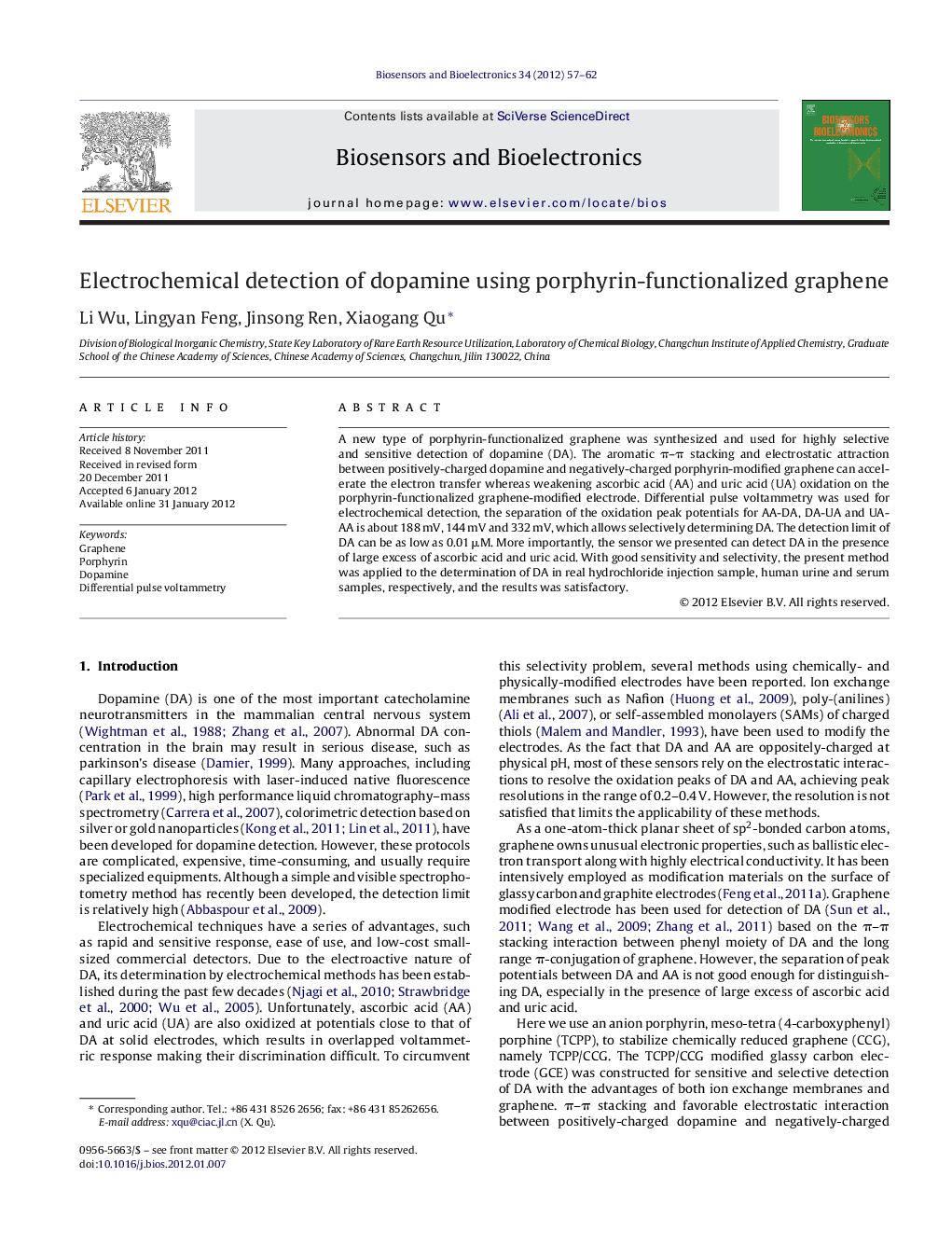| Article ID | Journal | Published Year | Pages | File Type |
|---|---|---|---|---|
| 867442 | Biosensors and Bioelectronics | 2012 | 6 Pages |
A new type of porphyrin-functionalized graphene was synthesized and used for highly selective and sensitive detection of dopamine (DA). The aromatic π–π stacking and electrostatic attraction between positively-charged dopamine and negatively-charged porphyrin-modified graphene can accelerate the electron transfer whereas weakening ascorbic acid (AA) and uric acid (UA) oxidation on the porphyrin-functionalized graphene-modified electrode. Differential pulse voltammetry was used for electrochemical detection, the separation of the oxidation peak potentials for AA-DA, DA-UA and UA-AA is about 188 mV, 144 mV and 332 mV, which allows selectively determining DA. The detection limit of DA can be as low as 0.01 μM. More importantly, the sensor we presented can detect DA in the presence of large excess of ascorbic acid and uric acid. With good sensitivity and selectivity, the present method was applied to the determination of DA in real hydrochloride injection sample, human urine and serum samples, respectively, and the results was satisfactory.
► We developed a graphene-based electrochemical sensor for sensitive and selective detection of dopamine. ► The graphene was functionalized with negatively-charged phorphyrin for eliminating the interference of ascorbic acid and uric acid. ► The limit of detection for dopamine was as low as 0.01 μM through the differential pulse voltammetry method. ► The presented method was also applied to determination of dopamine in real human urine and serum samples and obtained satisfied results.
